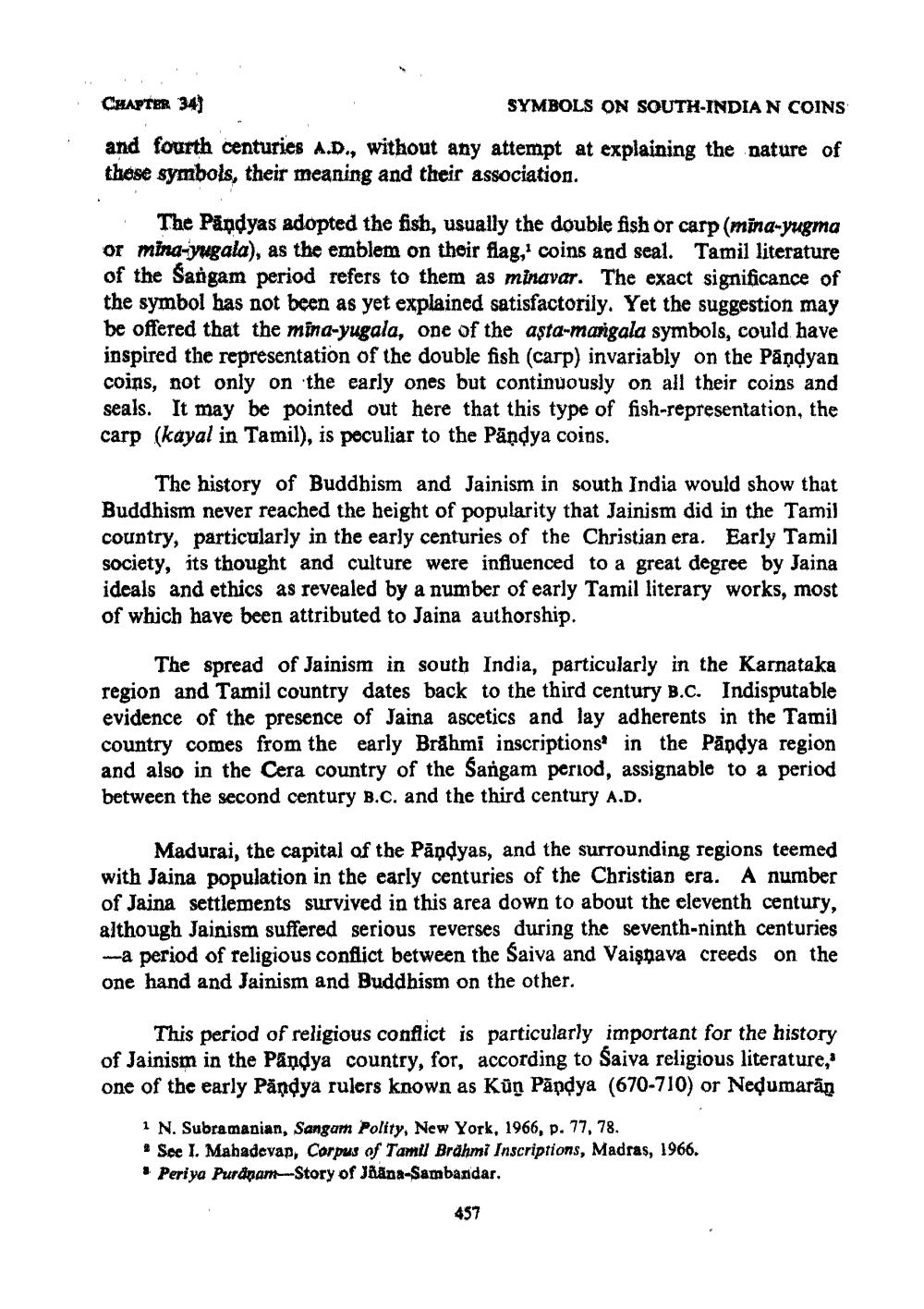________________
CHAPTER 34]
SYMBOLS ON SOUTH-INDIAN COINS and fourth centuries A.D., without any attempt at explaining the nature of these symbols, their meaning and their association.
The Pandyas adopted the fish, usually the double fish or carp (mina-yugma or mina-yugala), as the emblem on their flag,' coins and seal. Tamil literature of the Sangam period refers to them as minavar. The exact significance of the symbol has not been as yet explained satisfactorily. Yet the suggestion may be offered that the mina-yugala, one of the asta-mangala symbols, could have inspired the representation of the double fish (carp) invariably on the Pandyan coins, not only on the early ones but continuously on all their coins and seals. It may be pointed out here that this type of fish-representation, the carp (kayal in Tamil), is peculiar to the Pandya coins.
The history of Buddhism and Jainism in south India would show that Buddhism never reached the height of popularity that Jainism did in the Tamil country, particularly in the early centuries of the Christian era. Early Tamil society, its thought and culture were influenced to a great degree by Jaina ideals and ethics as revealed by a number of early Tamil literary works, most of which have been attributed to Jaina authorship.
The spread of Jainism in south India, particularly in the Karnataka region and Tamil country dates back to the third century B.C. Indisputable evidence of the presence of Jaina ascetics and lay adherents in the Tamil country comes from the early Brahmi inscriptions in the Päpdya region and also in the Cera country of the Sangam period, assignable to a period. between the second century B.C. and the third century A.D.
Madurai, the capital of the Pandyas, and the surrounding regions teemed with Jaina population in the early centuries of the Christian era. A number of Jaina settlements survived in this area down to about the eleventh century, although Jainism suffered serious reverses during the seventh-ninth centuries --a period of religious conflict between the Saiva and Vaisnava creeds on the one hand and Jainism and Buddhism on the other.
This period of religious conflict is particularly important for the history of Jainism in the Pandya country, for, according to Saiva religious literature, one of the early Pandya rulers known as Kūn Päpdya (670-710) or Nedumarän
1 N. Subramanian, Sangam Polity, New York, 1966, p. 77, 78.
* See I. Mahadevan, Corpus of Tamil Brahmi Inscriptions, Madras, 1966.
• Periya Puranam-Story of Jääna-Sambandar.
457




